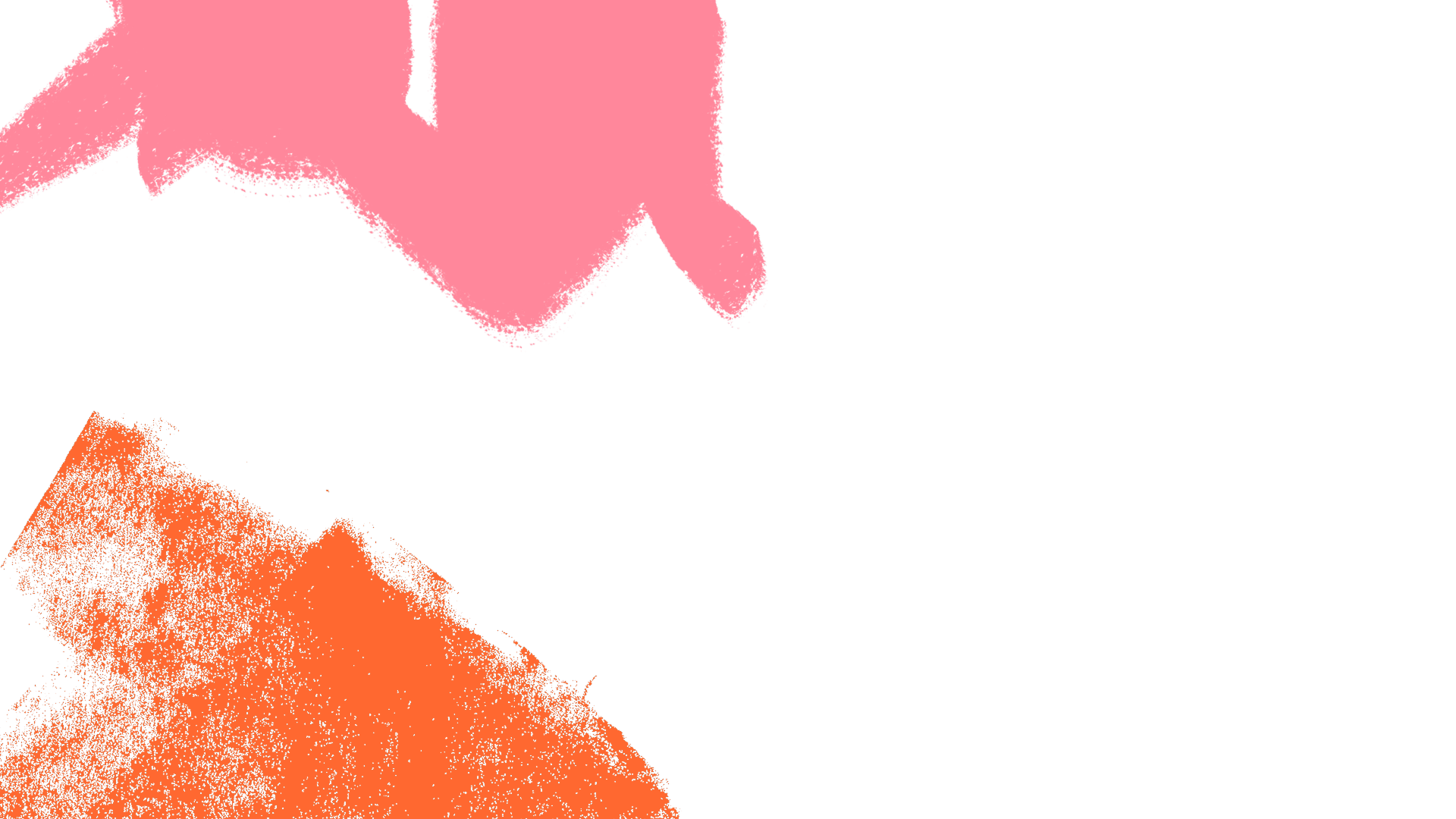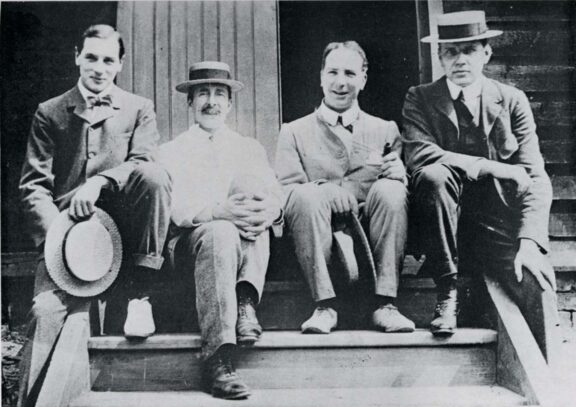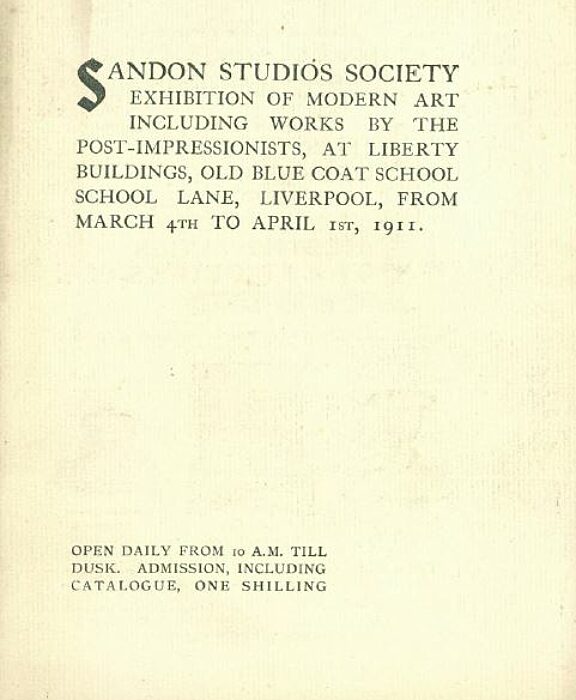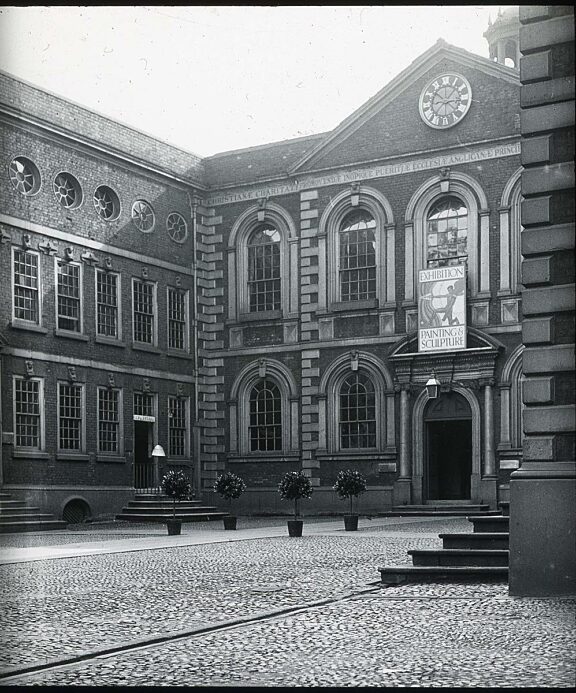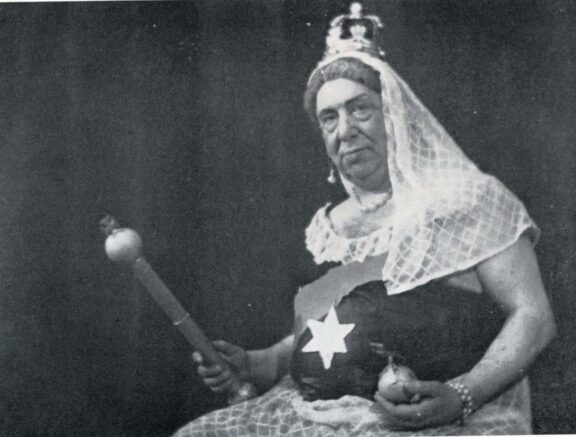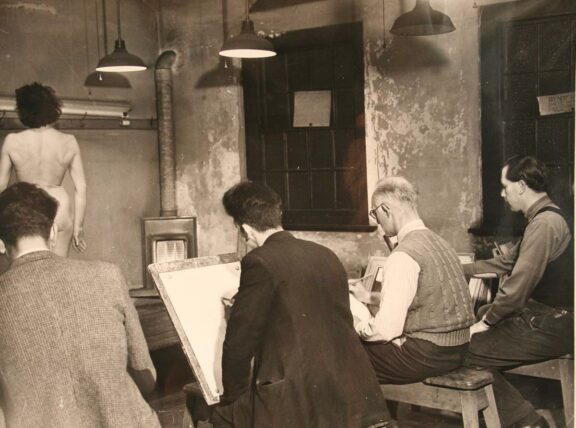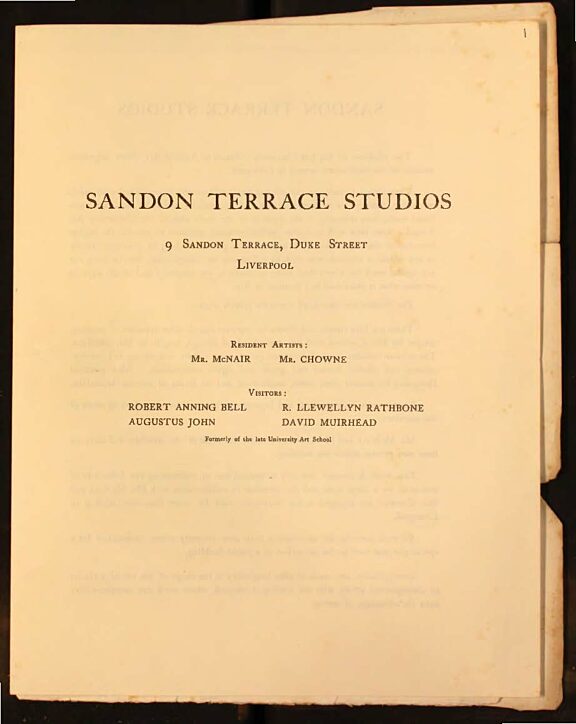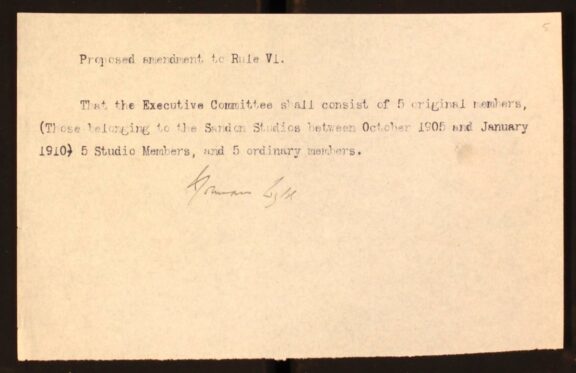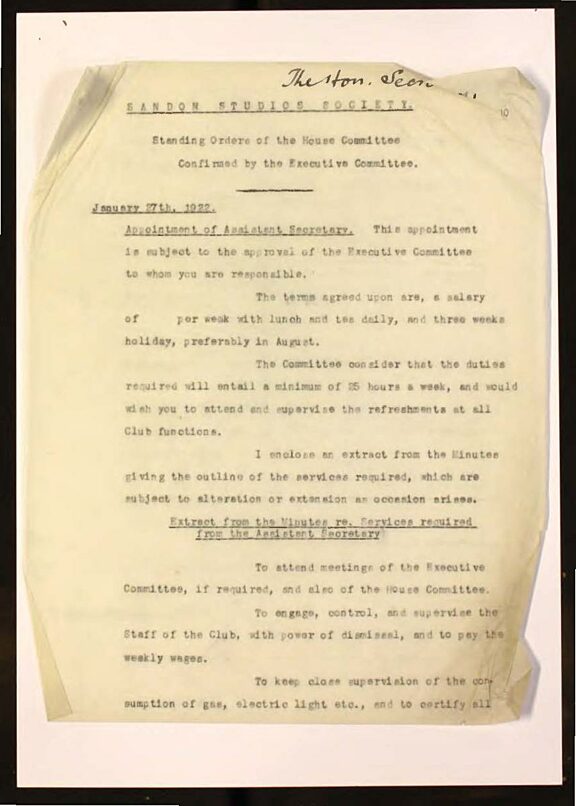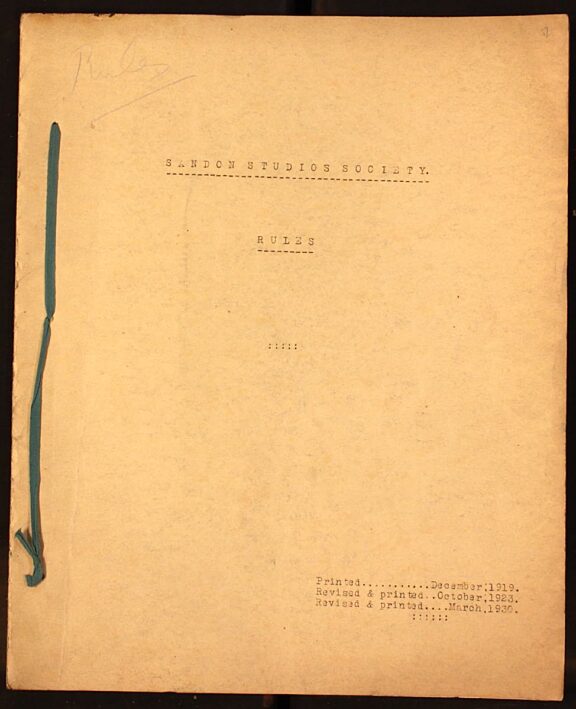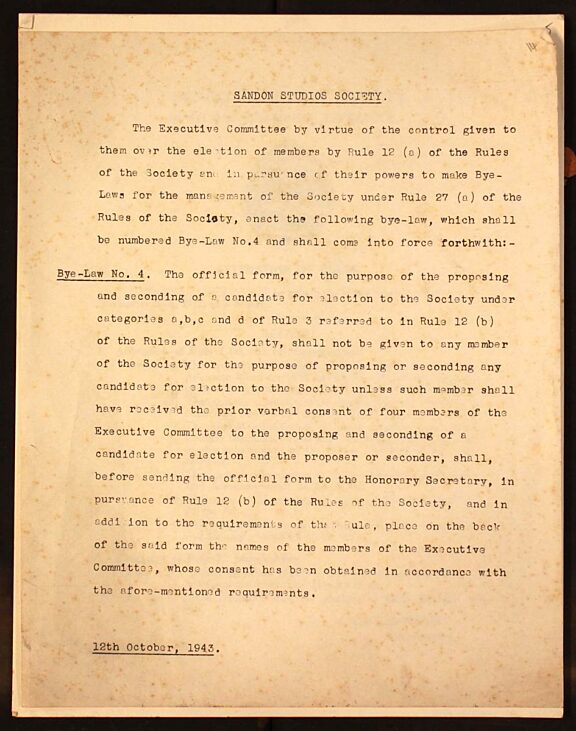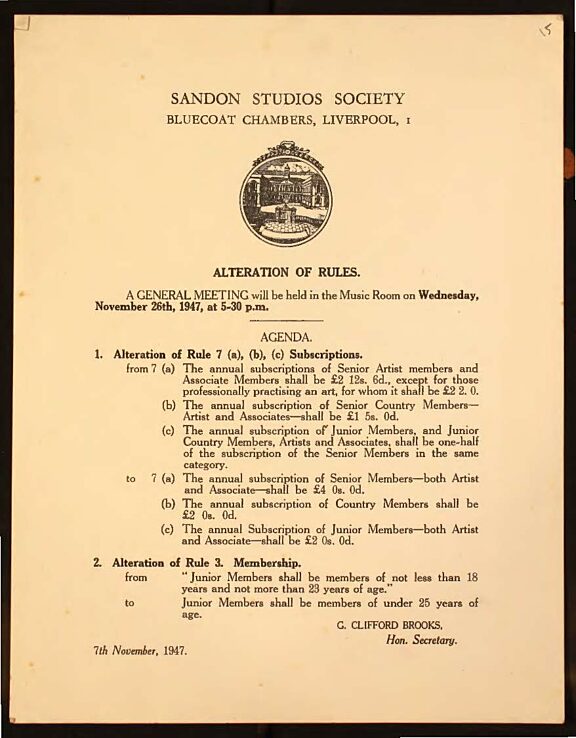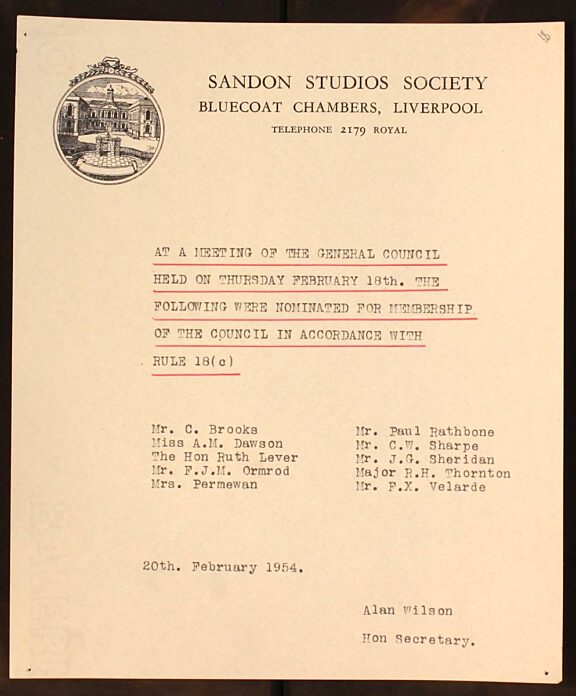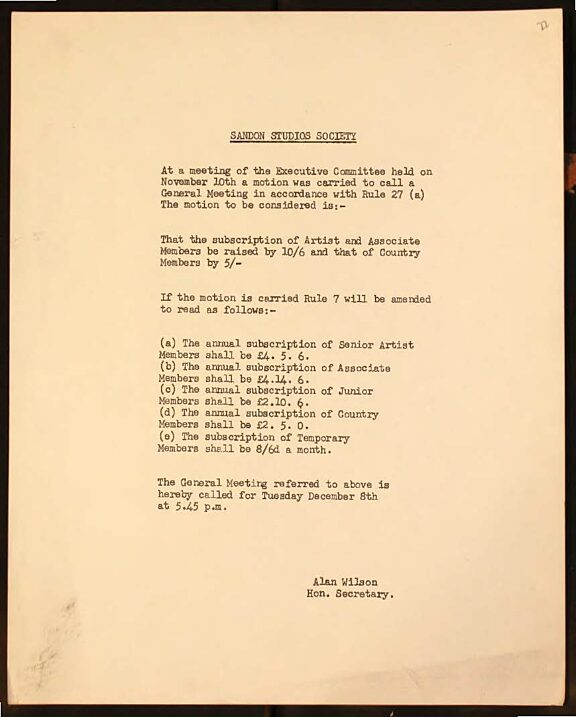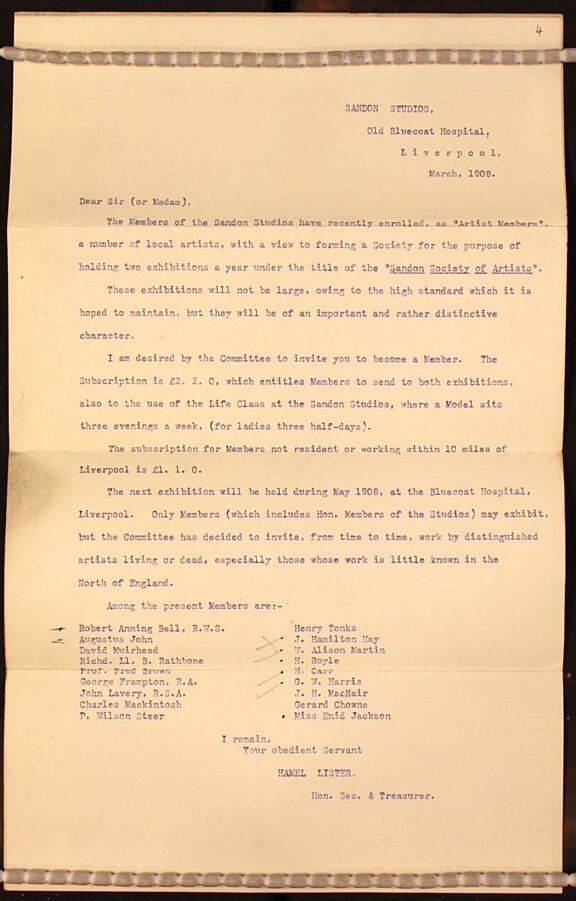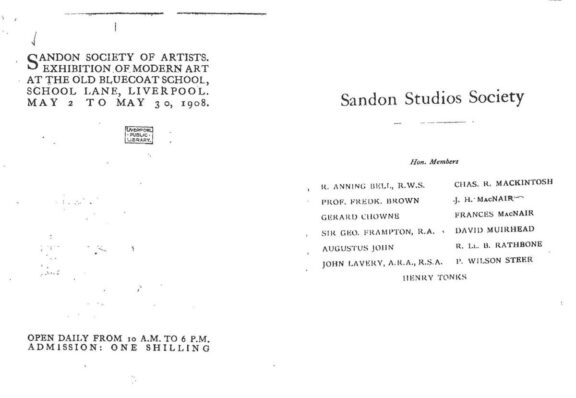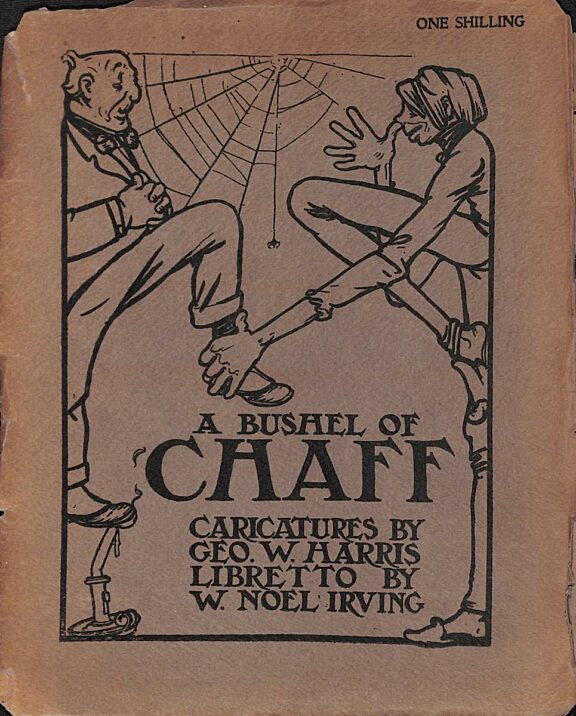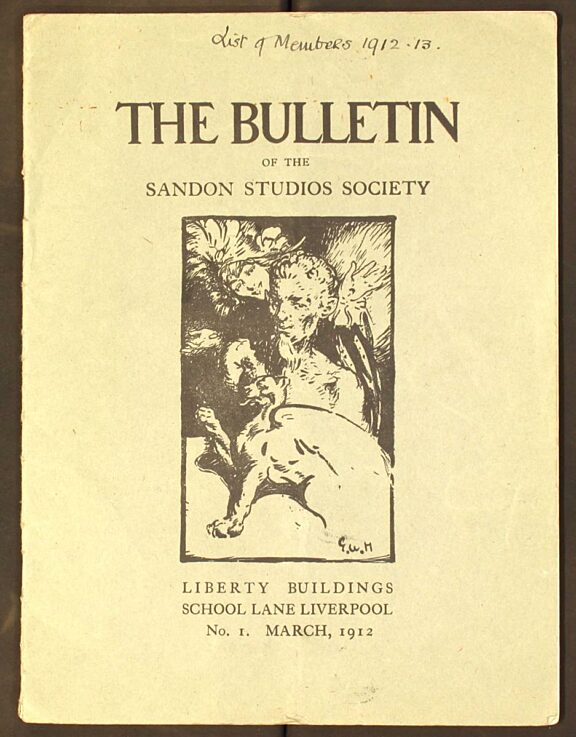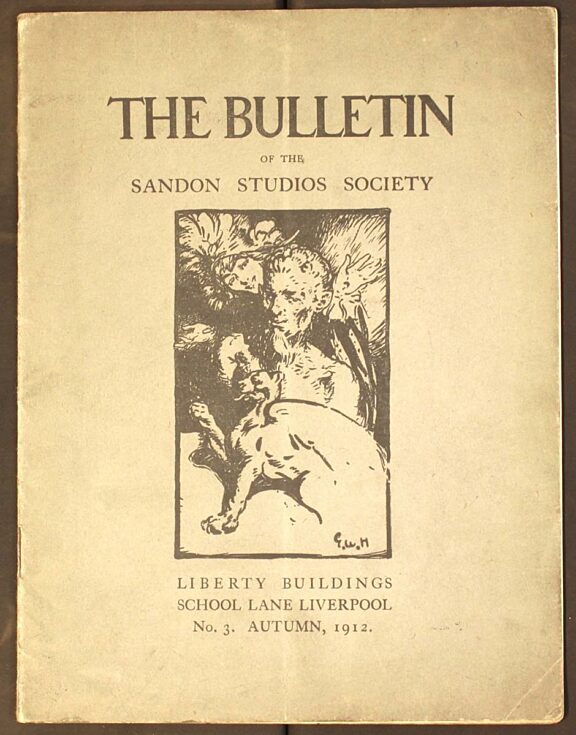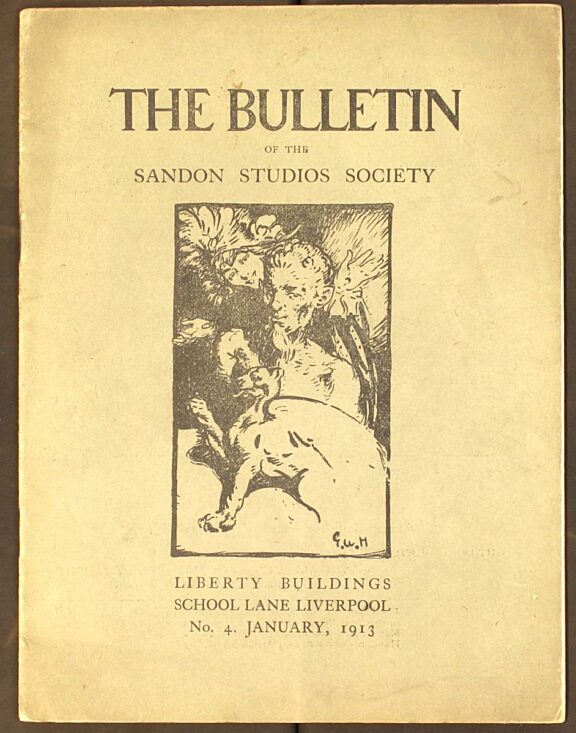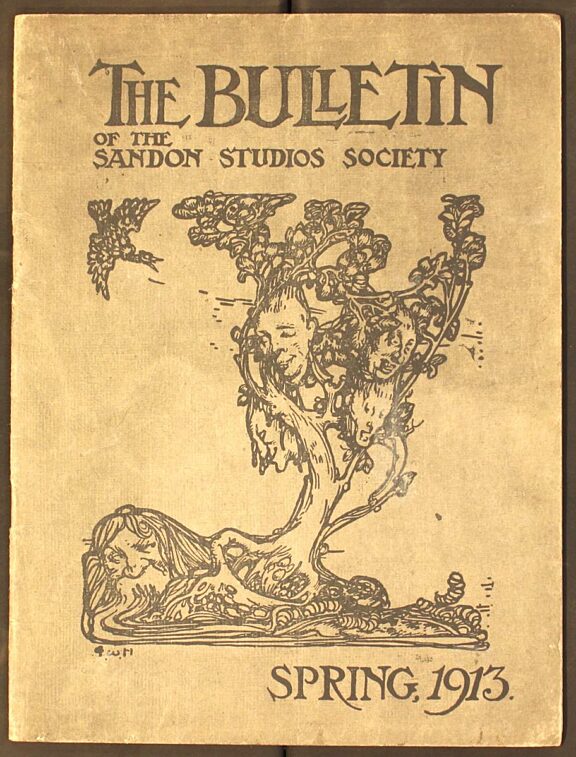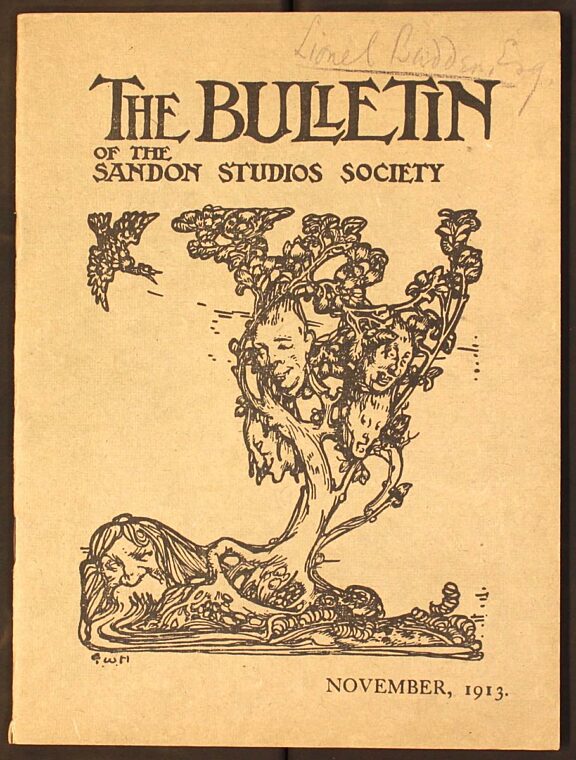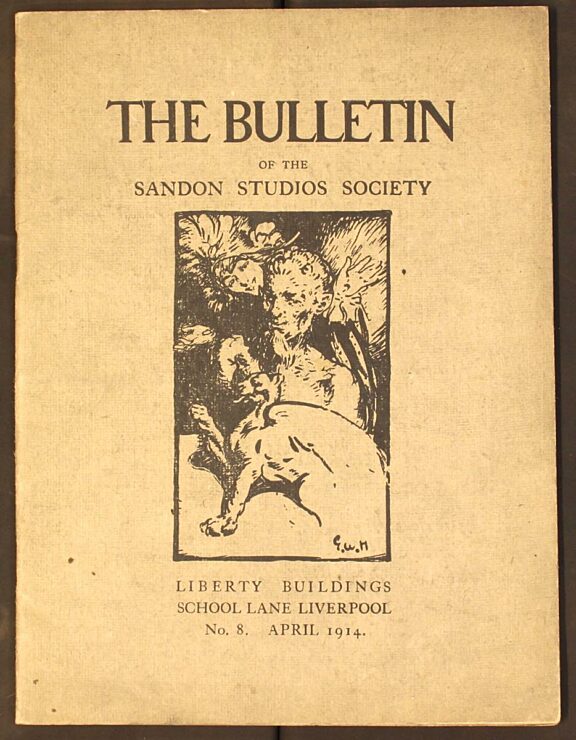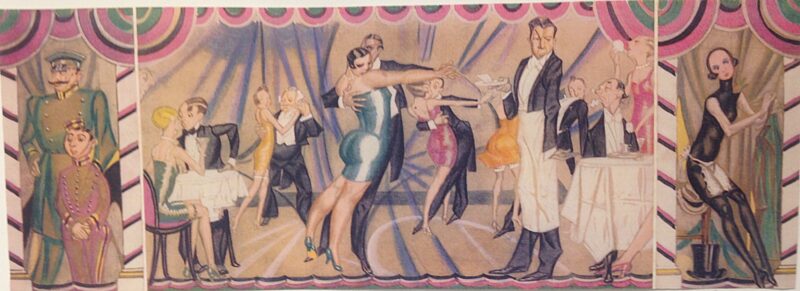
The story of art at Bluecoat begins in 1907 when a group of former students from the Art Sheds - the Applied Art and Design Department of the University of Liverpool - who’d created an independent art school at Sandon Terrace (near the Anglican Cathedral, under construction), rented rooms in the vacant school building. The group established a community of working artists and expanded membership to others interested in art and ideas, preparing the ground for Bluecoat to become the UK's first arts centre, which was formally constituted in 1927 with the establishment of Bluecoat Society of Arts.
The Sandon organised its first public modern art exhibition at Bluecoat in 1908, which included a painting by Monet, then, in 1911, Sandon artists exhibited alongside Picasso, Matisse, Van Gogh and Cézanne in the first Post-Impressionists exhibition. In the first two decades of the century, the building was developed into an artistic hub, featuring exhibitions, concerts, talks and parties. The Sandon's art, music and drama groups were active for many years, and its dining room hosted visits from illustrious composers like Stravinsky, Holst, Bartok, and musicians, actors and choreographers like Kathleen Ferrier, George Balanchine, Margot Fonteyn and Laurence Olivier.
Though it had a close - and occasionally strained - relationship with Bluecoat Society of Arts, which it had helped create, the Sandon remained a paying tenant of the building, continuing to play a vital role in the post-war period, when its music group was especially active. An LP recording of music by three of its members was released in 1965, backed by a miscellany of sound, including an interview with sculptor Herbert Tyson Smith about his eventful years at Bluecoat. A colourful account of the Sandon was published by life-long member Roderick Bisson in 1965. Sandon activities reduced in the 1970s, the society folding the next decade. Its archive, some of which is reproduced here, is housed at Liverpool Record Office. The image above is from George Harris' frieze design for one of the legendary Sandon cabarets.
